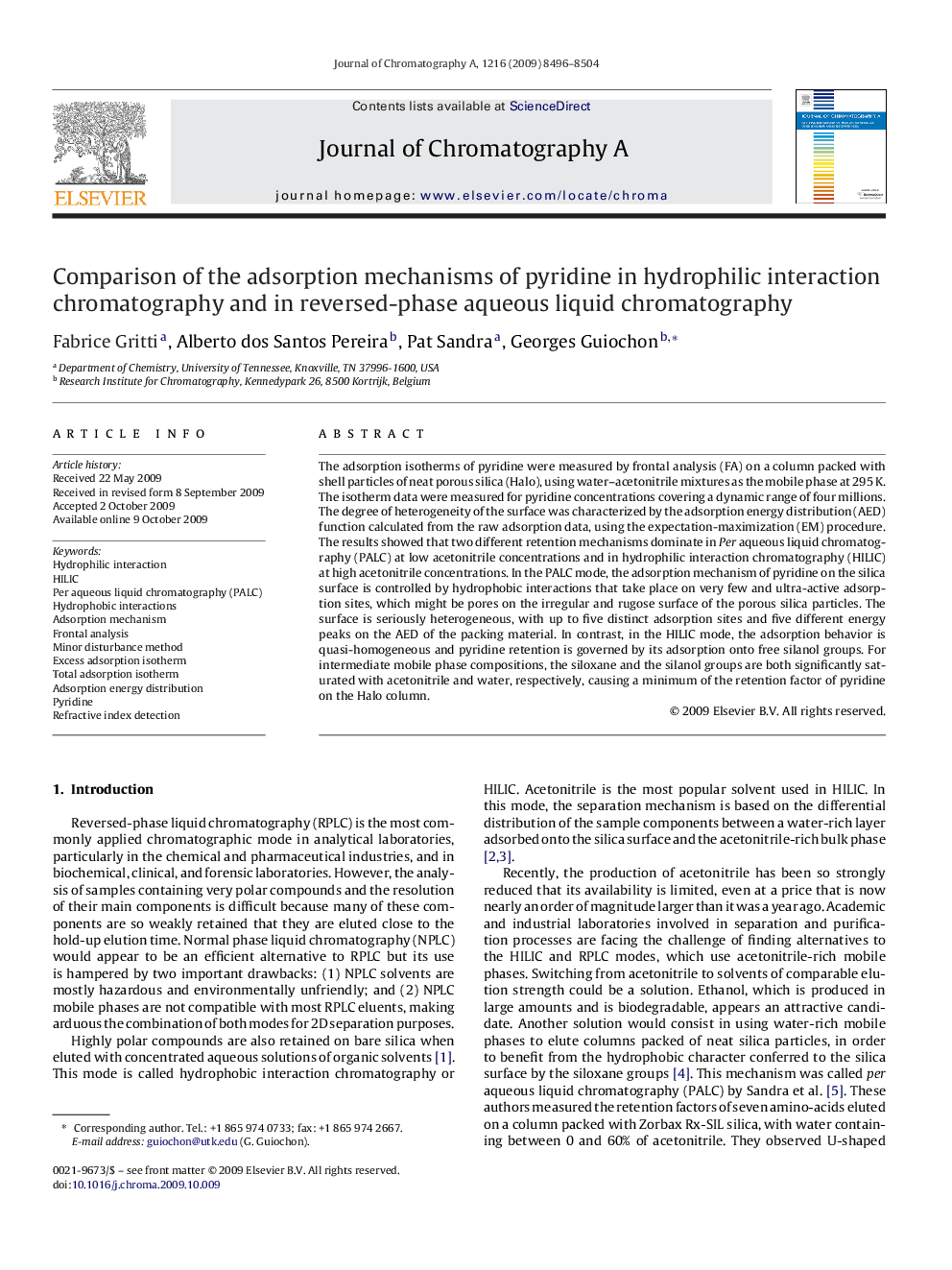| Article ID | Journal | Published Year | Pages | File Type |
|---|---|---|---|---|
| 1204641 | Journal of Chromatography A | 2009 | 9 Pages |
Abstract
The adsorption isotherms of pyridine were measured by frontal analysis (FA) on a column packed with shell particles of neat porous silica (Halo), using water-acetonitrile mixtures as the mobile phase at 295Â K. The isotherm data were measured for pyridine concentrations covering a dynamic range of four millions. The degree of heterogeneity of the surface was characterized by the adsorption energy distribution (AED) function calculated from the raw adsorption data, using the expectation-maximization (EM) procedure. The results showed that two different retention mechanisms dominate in Per aqueous liquid chromatography (PALC) at low acetonitrile concentrations and in hydrophilic interaction chromatography (HILIC) at high acetonitrile concentrations. In the PALC mode, the adsorption mechanism of pyridine on the silica surface is controlled by hydrophobic interactions that take place on very few and ultra-active adsorption sites, which might be pores on the irregular and rugose surface of the porous silica particles. The surface is seriously heterogeneous, with up to five distinct adsorption sites and five different energy peaks on the AED of the packing material. In contrast, in the HILIC mode, the adsorption behavior is quasi-homogeneous and pyridine retention is governed by its adsorption onto free silanol groups. For intermediate mobile phase compositions, the siloxane and the silanol groups are both significantly saturated with acetonitrile and water, respectively, causing a minimum of the retention factor of pyridine on the Halo column.
Keywords
Related Topics
Physical Sciences and Engineering
Chemistry
Analytical Chemistry
Authors
Fabrice Gritti, Alberto dos Santos Pereira, Pat Sandra, Georges Guiochon,
